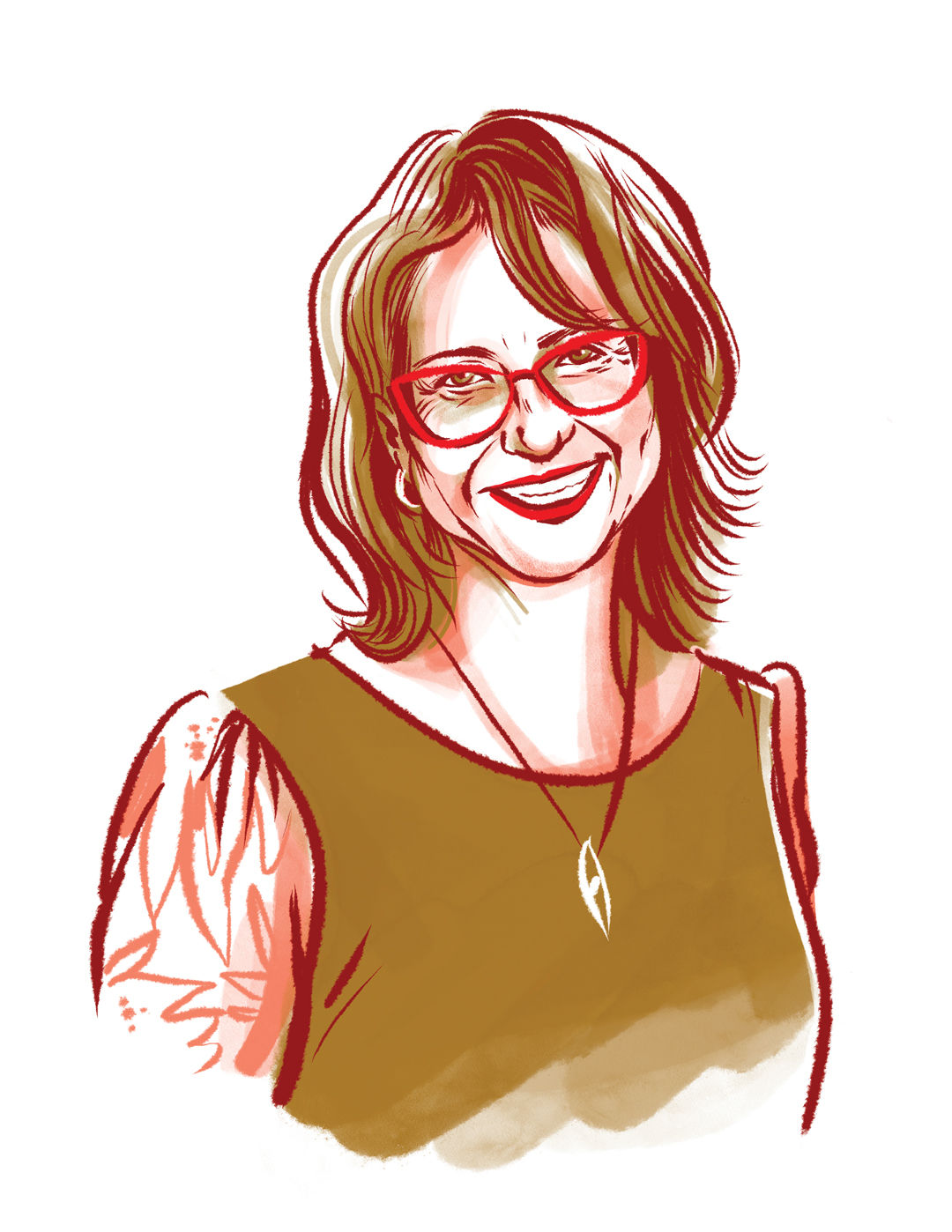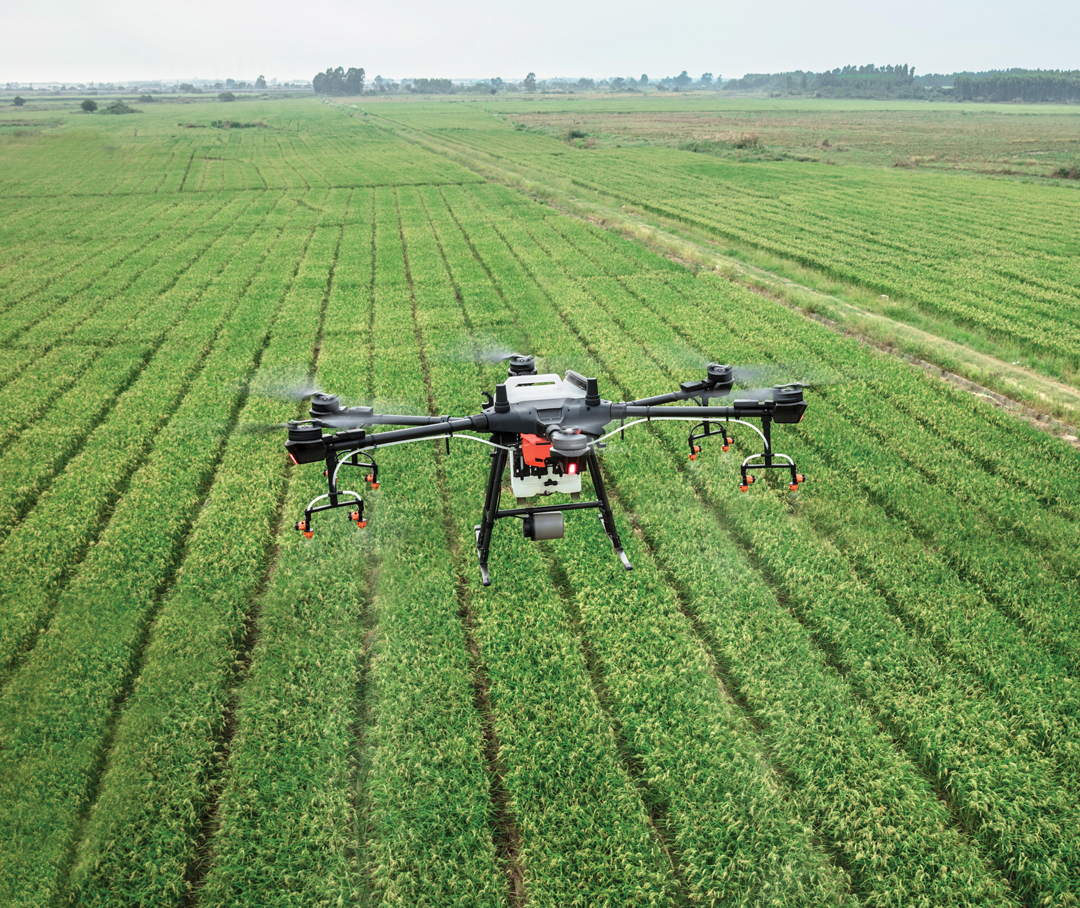RESULTS ORIENTED
BY IAN DOIG • ILLUSTRATION BY EMILY CHU
Created by the Province in March 2020 and launched for operation the following spring, Results Driven Agriculture Research (RDAR) is a farmer-led, not-for-profit corporation with a 10-year budget of $370 million. In support of projects across the value chain from farm to store shelf, its central priority is to boost farm productivity, profitability and competitiveness. As a researcher and administrator, Sheri Strydhorst knows how to produce results, and in October was hired as the organization’s research program manager for crops.
GrainsWest: How do you approach work on your own farm?
Sheri Strydhorst: My husband Shane and I farm two hours northwest of Edmonton in Neerlandia. We’re blessed with productive soils and generally timely rains that allow for high-yield potential and intensive management. Our farm has changed over 24 years. Initially, we had crops, beef cattle and custom-fed hogs. However, now we are exclusively crops—wheat, barley, canola, faba bean and occasionally oat—with some forage.
Diverse crop rotations, true zero tillage whenever possible and shelterbelts are all tools we use to maintain and improve the health of our soils and cropping system. Shane does the lion’s share of the work with some seasonal help at seeding and harvest. My role is in decision-making, especially agronomic management.
GW: You have a career in ag research, you farm and you operate your own ag consulting business. How does that all go together?
SS: I am a farming partner who brings agronomic advice, makes sure bills get paid, occasionally picks up fuel and juggles home and family life to make sure the actual work of farming is done well. I worked professionally in ag research for seven years with the Alberta government. I had an applied cereal agronomic research program that focused on wheat and barley variety-specific management, nitrogen fertility, foliar fungicide management and plant growth regulators. My program targeted the yield-robbing and logistical challenges farmers face. I sought solutions to their problems to ensure they could maintain and grow farm profitability.
In 2022, I began Sheri’s Ag Consulting. I co-ordinated the cereal Regional Variety Trials for Alberta Grains, which was generously funded by RDAR. I also had contracts with Alberta Grains and Alberta Pulse to analyze their field-scale, on-farm research data.
These jobs benefit each other and are more than the sum of their parts. For example, farming with my husband and living in a farming community make me acutely aware of the issues and challenges grain farmers face. I have a first-hand understanding of the logistical and financial stresses that impact farmer decision-making. I joke that the more Shane is stressed, the better I am at my job, as it helps me identify the industry’s bottlenecks and pinch points.
GW: What is your favourite activity associated with each job?
SS: I love harvest on the farm. It’s like a report card. How did all your work pay off or not pay off? It is also the chance to have a realistic financial assessment of the season’s revenue to make decisions and plan for next year: “I would never grow that variety again,” “we are going to increase our acres of that variety for next year,” “we really should have used a PGR on that field” or “fungicide was so important this year.”
As for my research days, I learned a lot and made great professional connections. I still have conversations with farmers from across the province about how their season went, what worked, what didn’t and what they will try again.
However, in the research aspect of my career, I loved knowledge transfer—field days, farmer meetings and one-on-one discussions. Having a group of people to chat with after a presentation was always critical for informing future research needs and more effective ways to present information.
With my consulting business, I loved the diversity of people I worked with, from seed distributor companies to the crop commissions to the research community.
GW: Given your busy schedule, how do manage work–life balance?
SS: That is tough for me. In addition to my ag work, I am very community minded. I have served six years on our local public school council and am now treasurer of our local swim club. Staying active includes getting in my daily, 13,500 step count with yard work and walks, outside and on the treadmill. My ultimate reset comes with travel. I love experiencing and learning about other countries and cultures. It’s also great to unplug on trips and disconnect from email and text messages.
GW: What was your most personally and professionally formative job?
SS: It is the summation of the interactions I’ve had throughout my career, the people I’ve met and learned from. My dream job was my first professional position as executive director of Alberta Pulse Growers (APG). I’m often thought of as a researcher or as someone knowledgeable about agronomy, but I think my time at APG taught me about the diverse and complex interactions of the ag industry. For example, how production is interconnected with markets, input costs, equipment costs, regulations, government policy, crop insurance and agronomic practices.
The decisions farmers make are influenced by many competing factors. Being aware of this complexity in the industry is incredibly important to be successful and influential. It is critical to know what motivates people and their decisions; often, it is not what is most obvious from the outside looking in.
GW: How would you describe your approach to ag research and extension?
SS: Practical, practical, practical. The research must address a pressing need and present realistic solutions that can be implemented on-farm. The cost of implementing new research findings and the logistics cannot be overlooked. All research findings must be put into the farm context. Listening is also a critical component of research and knowledge transfer. At conferences, I always feel I learn so much more from my one-on-one conversations with farmers, which will inform future research and how messages are presented so they resonate with the end-user farmer.
GW: How familiar were you with RDAR before you joined the organization?
SS: I received RDAR funding for the Regional Variety Trials, and that work focused on helping farmers select the right variety for their farms, so they are most profitable and competitive. RDAR has been very consistent in that the beneficiaries of its research investments are ultimately farmers and farm profitability.
GW: RDAR-funded projects are intended to benefit farmers economically. How do you hope farmers view the organization’s activities?
SS: I want farmers to know RDAR is in their corner and wants to make investments that benefit them and their farms today and in the future.
GW: What are the highlights of RDAR’s activities so far?
SS: RDAR funded 377 projects between its inception and March 30, 2024. The organization invested nearly $80 million, which leveraged contributions from its funding partners. That translated to more than $256 million in research targeted to the needs of farmers. Fifty-five per cent of the projects had outcomes that could be applied on the farm within three years.
It funds 11 RDAR professors in post-secondary institutes and provides base funding for 12 applied research and forage associations and provided Western Crop Innovations with $2 million in operational start-up funding. RDAR has put a finer focus on investing in research to improve farmer revenues and is fully committed to driving our industry forward for the benefit of all Albertans.







Comments